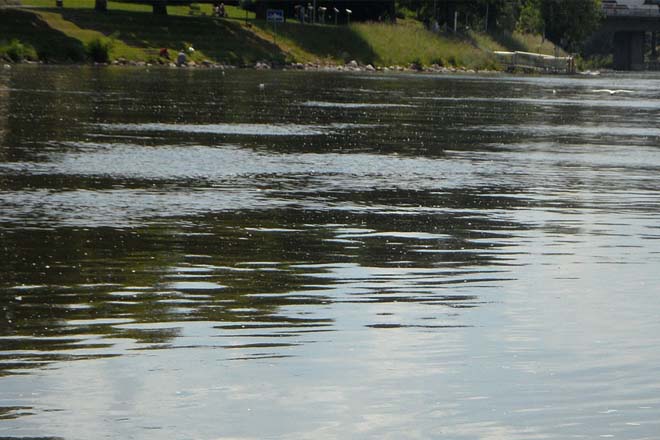- Comprehensive policies will improve community access, increase focus on sanitation and investment
- A new policy could tackle urbanisation challenges for inclusive and sustainable water and sanitation management
- It can also open new investment approaches to bridge the large financing gaps as the country prepares to rise above the impact of COVID-19
Meeting Sri Lanka’s rapidly increasing water and sanitation needs will require a comprehensive national policy capable of managing institutional coordination, improve planning, and attract investment to benefit millions of people. Sri Lanka is on track to meet its Sustainable Development Goal (SDG) of providing basic access to clean drinking water and sanitation but Sri Lanka will have to focus on safely managed access. (SDG 6.2) Especially, in the coming decades with the growing urbanisation, pollution, climate change and budgetary constraints compounded with the impact of COVID-19.
According to the Sri Lanka Demographic Health Survey (DHS), 90% of households have access to safe drinking water and sanitation coverage. However, there are strong spatial differences with only 36% of people having access to piped water and 2% to piped sewerage. Coverage also largely benefits urban populations with 57% of households in the estate sector not having access to improved water sources. In Nuwara Eliya, a district hosting a substantial share of the estate population, access to clean water stands at 54%. In contrast, Colombo has an access rate of 99.9%.
“To bridge decades of uneven progress and link water access with improved sanitation Sri Lanka needs an all-encompassing government policy. A data-led policy approach would establish specific goals, streamline service delivery, improve funding opportunities, embed climate resilience and support larger development targets,” said World Bank Senior Economist George Joseph.
Policies can also be used to address various water supply and sanitation issues, the risk of water degradation due to natural disasters, deficient agriculture practices and pollution from agrochemicals and industrial waste. Sri Lanka suffers from water degradation due to development activities, recurrent natural disasters, such as floods, droughts, and landslides.
By adopting an overarching water sector policy and plan that includes sanitation, Sri Lanka can establish phased long-term targets (for example, till 2023, 2027 and 2030), in line with SDGs, which should be made available and integrated into the annual budgets of line ministries. Performance against each of these can be reported on a yearly basis to track progress. Such a policy would buffer against administrative changes and be carried forward centred on national interest.
An apex institution able to coordinate across central government and other government bodies as well as community-based water projects can lead implementation. The presence of such a central institution can provide policy direction, guidelines, and oversight, as well as act as a repository of data and information on the overall water sector. Increasing capacities and reassessing the responsibilities of existing institutions would also clarify functions, improve efficiency, and realign priorities between agriculture and other water needs.
Master plans for water and sanitation should be factored into larger urbanisation plans of the government to identify bottlenecks and improve scalability.
Sanitation: The Forgotten Child
Public funding for water projects has increased in recent years; at around 1% of GDP. In 2018, about 50% or more of budget funds were allocated to drinking water projects with just 0.1% earmarked for sanitation by the relevant line ministry. Given Sri Lanka’s ongoing demographic and socioeconomic changes, and COVID-19, increased funding allocations for sanitation is urgently needed.
The financing gap for the sector is enormous and estimated at around 526% for water supply and sanitation. Further, spending on wastewater and sewerage is also one of the lowest among the sub-sectors, and requires greater funding to improve service delivery in the sector.
Historically funding has flowed from foreign sources and revamping the sector would enable new avenues such as Public-Private Partnerships (PPPs) to be formed to ease budget pressures on State coffers while increasing and improving services to Sri Lankans. PPPs would also encourage knowledge transfer, stronger community involvement and enable the roll out of a larger number of projects. Involvement of multilateral funding agencies to support national bodies such as the NWSDB could facilitate capacity building, establish a pipeline of projects and address spending biases across provinces.
Fresh funding sources can also bridge service gaps. Coverage of piped water supply mirrors uneven spending with the Western Province having the highest coverage (67%) and Northern Province the lowest (12%). A detailed investigation into the apparent disparity in spending and service delivery in different regions would identify needs and improve service delivery potentially benefitting millions of people.
"Universal access to water supply and sanitation need to go hand in hand. When you increase access to water supply you have to increase sanitation because as people get more water, they also generate more wastewater. As Sri Lanka’s population grows, becomes more urbanised and clean water resources become scarcer, it will be essential to have strong interconnected policies to protect, manage and utilise this precious resource," said Senior Water and Sanitation Specialist Pratibha Mistry.

